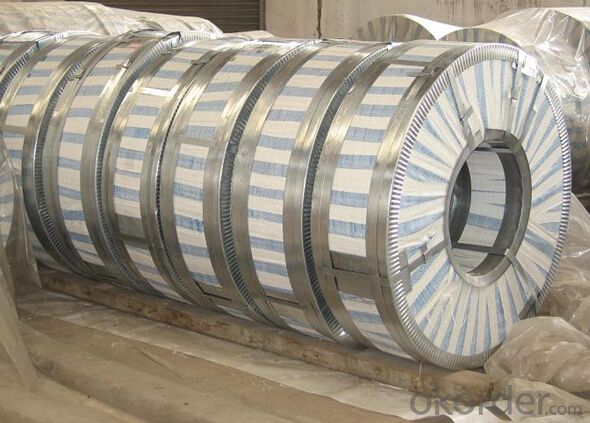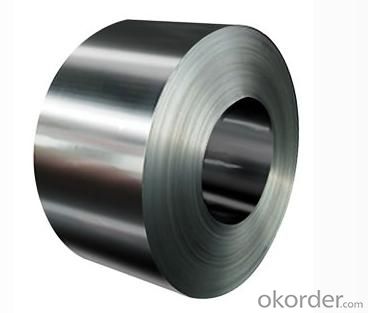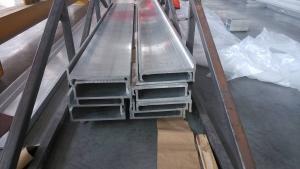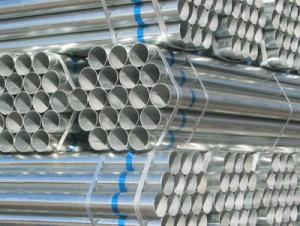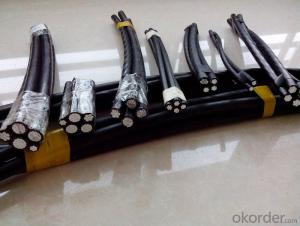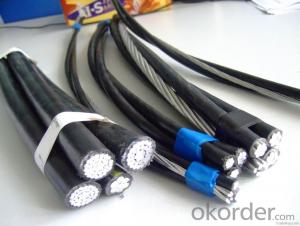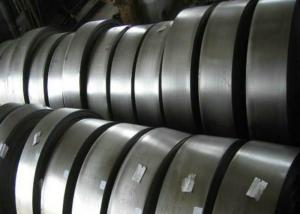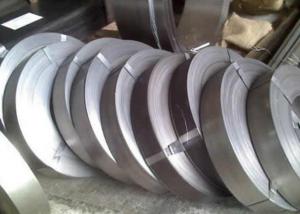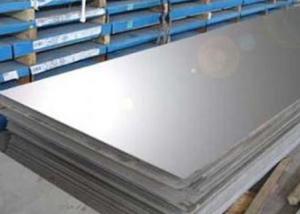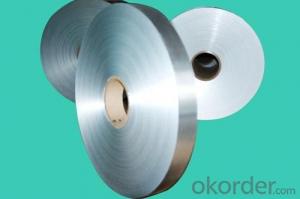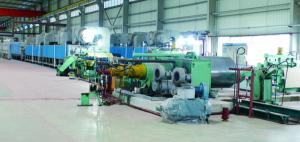striped steel
- Loading Port:
- China Main Port
- Payment Terms:
- TT OR LC
- Min Order Qty:
- -
- Supply Capability:
- -
OKorder Service Pledge
OKorder Financial Service
You Might Also Like
ERW pipes are used in Water Pipelines, Agriculture and Irrigation (Water Mains, Sewerage Systems, Industrial Water Lines, Plant Piping, Deep Tube-Wells & Casing Pipes). Other popular application area includes usage in gas pipe lines (pipe lines for natural gas, LPG and other non-toxic gases). The SW is meant for shallow water applications This could be in a canal, natural stream, culvert, or pipe
Steel Pipes manufacters and Exports huge range of ERW Galvanized Steel Tubes & Steel Pipes. For pipes or tubes size 8 inch (219 mm) OD and below, strip is fed into a set of forming rolls which consists of horizontal and vertical rollers so placed as to gradually from the flat strip in to a tube which is then allowed to pass the welding electrodes. The electrodes are copper disks connected to the secondary of a revolving transformer assembly. The copper disk electrodes make contact on each side of the seam and temperature is raised to the welding point. Outside flash is removed by a cutting tool as the tube leaves the electrodes, inside flash is removed either by an air hammer or by passing a mandnel through the welded tube after the tube has been cooled. This is termed as Electric Resistance Welded or ERW tube/pipe.
- Standard:DIN2391 part 2 , DIN EN10305-1, DIN17175 etc;
- Material: ST35,ST45,ST52.
- Manufacturing method: cold-rolled / cold-drawn
- Delivery condition: BK,BKS,SR,GBK,NBK.
- Certificate
- Factory Certification: 2.2 according to EN
- Acceptance Test Certificate:3.1 according to EN 10204
- Packing:
- in bundles tied with steel strips. External packing by wooden cases if the wall thickness/OD ratio is low.
- Oil-coating is generally necessary especially for export.
- Q: How is stainless steel scrap tested for quality and composition?
- Stainless steel scrap is tested for quality and composition through various methods to ensure its suitability for further processing and applications. One of the commonly used techniques is spectroscopy, specifically X-ray fluorescence (XRF) and optical emission spectroscopy (OES). XRF analysis involves bombarding the sample with X-rays, which causes the atoms in the sample to emit characteristic fluorescent X-rays. By measuring the intensity and energy of these emitted X-rays, the elemental composition of the stainless steel scrap can be determined. This analysis helps identify the presence of alloying elements such as chromium, nickel, molybdenum, and others that are crucial for the corrosion resistance and strength of stainless steel. OES, on the other hand, utilizes a high-energy spark to excite the atoms in the sample, causing them to emit light at specific wavelengths. By analyzing the emitted light, the concentration of various elements can be determined. OES is particularly useful for detecting trace elements in stainless steel scrap that might affect its mechanical properties and overall quality. Besides spectroscopic techniques, other tests are performed to assess the quality of stainless steel scrap. These include tensile testing, hardness testing, and microstructural analysis. Tensile testing determines the material's mechanical properties, such as its yield strength, ultimate tensile strength, and elongation, providing insights into its structural integrity. Hardness testing measures the material's resistance to indentation, providing information about its strength and wear resistance. Microstructural analysis involves examining the structure of the material under a microscope, allowing for the identification of impurities, inclusions, and other defects that might compromise its quality. Overall, the testing of stainless steel scrap for quality and composition is a comprehensive process that combines various techniques to ensure its suitability for further use. By employing spectroscopy, tensile testing, hardness testing, and microstructural analysis, manufacturers can accurately determine the composition and quality of the stainless steel scrap, enabling them to make informed decisions regarding its utilization in various applications.
- Q: How is stainless steel scrap sorted by condition?
- Stainless steel scrap is sorted by condition based on its quality, appearance, and level of contamination.
- Q: How can stainless steel scrap be used in the production of kitchen appliances?
- Stainless steel scrap can be recycled and used as a raw material in the production of kitchen appliances. It can be melted down and transformed into new stainless steel sheets that can be used for manufacturing various components of kitchen appliances like stoves, refrigerators, sinks, and dishwashers. This not only reduces the need for virgin stainless steel production but also helps in cost-saving and promoting sustainability in the appliance manufacturing industry.
- Q: Can stainless steel scrap be used in the production of electronic circuit boards?
- Yes, stainless steel scrap can be used in the production of electronic circuit boards. Stainless steel is often used in electronic circuit boards for its high strength, corrosion resistance, and thermal conductivity properties. It is commonly used as a base material for mounting electronic components and providing structural support. Stainless steel scrap can be recycled and processed to meet the specific requirements of electronic circuit board production, making it a cost-effective and sustainable choice for manufacturers.
- Q: How can stainless steel scrap be used in the production of renewable energy infrastructure?
- There are multiple ways in which stainless steel scrap can effectively contribute to the development of renewable energy infrastructure. To begin with, due to its corrosion resistance and durability, stainless steel is an excellent material for constructing wind turbines. By melting down the scrap, it can be used to manufacture various turbine components such as towers, nacelles, and blades. This utilization of stainless steel scrap helps to decrease the production costs of wind turbines, thus making renewable energy more affordable and accessible. Moreover, recycled stainless steel can be utilized in the construction of solar power systems. Frames, mounting structures, and racking systems for solar panels can be created from recycled stainless steel. This not only helps in conserving resources but also reduces the carbon footprint associated with the production of new stainless steel. Additionally, stainless steel scrap can be effectively employed in the manufacturing of hydropower infrastructure. Stainless steel components like turbine runners, penstocks, and gates are often required in hydroelectric power plants. Utilizing stainless steel scrap in their production not only reduces costs but also minimizes the environmental impact associated with extracting and processing new stainless steel. Furthermore, stainless steel scrap can be utilized in the construction of biomass and bioenergy facilities. Equipment such as boilers, heat exchangers, and storage tanks, which are necessary for these facilities, can be manufactured using recycled stainless steel. By reusing stainless steel scrap, the demand for new stainless steel production is reduced, resulting in energy savings and decreased greenhouse gas emissions. In conclusion, the incorporation of stainless steel scrap in the production of renewable energy infrastructure offers numerous advantages. It helps to reduce costs, conserve resources, minimize environmental impact, and promote the circular economy by giving new life to materials that would otherwise be wasted.
- Q: How is stainless steel scrap used in manufacturing?
- Playing a crucial role in the manufacturing industry is stainless steel scrap, which refers to discarded or surplus stainless steel materials. Due to its unique properties and benefits, it is extensively utilized in various manufacturing processes. Firstly, the production of new stainless steel products heavily relies on stainless steel scrap. This is accomplished through recycling or melting, where the scrap is combined with other raw materials to create new stainless steel sheets, bars, pipes, and other forms. This recycling process not only helps conserve natural resources but also reduces the need for mining and extracting new stainless steel. Additionally, stainless steel scrap finds common usage in manufacturing components for different industries such as automotive, aerospace, construction, and appliances. Through processes like casting, forging, or machining, these scrap materials can be transformed into various shapes and sizes. The exceptional strength, durability, and corrosion resistance of stainless steel make it an excellent choice for creating parts and components that require these qualities. Moreover, stainless steel scrap plays a significant role in the production of alloys. By incorporating stainless steel scrap into alloy manufacturing, manufacturers can enhance specific properties such as strength, hardness, or resistance to extreme temperatures or chemicals. These alloys have diverse applications in sectors like the medical field, nuclear power plants, and the food and beverage industry. Furthermore, the art and design industry also make use of stainless steel scrap. Artists and designers often utilize scrap materials to create sculptures, furniture, or decorative pieces. Stainless steel's aesthetic appeal, versatility, and ability to withstand outdoor environments make it a favored choice for these creative projects. In conclusion, stainless steel scrap is an indispensable resource in the manufacturing industry. It offers cost-effective solutions, supports sustainability efforts, and enables the creation of innovative products with superior properties. By harnessing the potential of stainless steel scrap, manufacturers can minimize waste, conserve resources, and contribute to a more sustainable manufacturing industry.
- Q: Are there any limitations to recycling stainless steel scrap?
- Yes, there are limitations to recycling stainless steel scrap. While stainless steel is highly recyclable and retains its properties even after multiple recycling processes, there are a few limitations to consider: 1. Contamination: Contamination can occur when stainless steel scrap is mixed with other types of metal or non-metallic materials. This can reduce the quality and value of the recycled stainless steel. Therefore, it is important to properly sort and separate stainless steel scrap from other materials before recycling. 2. Alloy composition: Stainless steel comes in various grades and compositions, each with different properties. Some alloys may contain elements that are difficult to separate during the recycling process, making it more challenging to recycle them efficiently. Therefore, there may be limitations in recycling certain types of stainless steel alloys. 3. Energy consumption: While recycling stainless steel is generally energy-efficient compared to producing new stainless steel from raw materials, it still requires a significant amount of energy. The recycling process involves melting down the stainless steel scrap, which requires a high temperature and consumes energy. Therefore, the availability and cost of energy can impact the feasibility and efficiency of recycling stainless steel scrap. 4. Economic viability: The economic viability of recycling stainless steel scrap can depend on various factors, including the market demand for recycled stainless steel, the cost of transportation, and the availability of recycling facilities. If it is not economically viable to recycle certain types of stainless steel scrap due to low market demand or high costs, it may limit the recycling options for those specific materials. Despite these limitations, recycling stainless steel scrap is still highly beneficial for reducing waste, conserving resources, and minimizing the environmental impact of stainless steel production. Efforts should be made to overcome these limitations through improved sorting techniques, advancements in recycling technology, and raising awareness about the importance of stainless steel recycling.
- Q: What are the key players and stakeholders in the stainless steel scrap industry?
- The key players and stakeholders in the stainless steel scrap industry include: 1. Stainless Steel Scrap Suppliers: These are companies or individuals who collect, sort, and process stainless steel scrap materials. They play a crucial role in the industry by ensuring a steady supply of stainless steel scrap for recycling. 2. Stainless Steel Producers: These are companies that use stainless steel scrap as a raw material for manufacturing new stainless steel products. They rely on a consistent supply of high-quality scrap to produce stainless steel sheets, coils, bars, and other products. 3. Recycling Centers: These facilities are responsible for the recycling process of stainless steel scrap. They receive the scrap materials, process them, and transform them into usable stainless steel products. Recycling centers play a vital role in reducing waste and conserving natural resources. 4. Governments and Regulatory Agencies: They have an interest in the stainless steel scrap industry as it contributes to waste reduction, resource conservation, and environmental sustainability. Governments may introduce regulations and policies to promote recycling and ensure proper waste management practices. 5. Consumers: The demand for stainless steel products drives the need for stainless steel scrap. Consumers play a significant role as stakeholders in the industry since their purchasing decisions influence the demand for stainless steel products and, consequently, the need for scrap materials. 6. Environmental Organizations: These organizations are stakeholders in the stainless steel scrap industry due to their focus on promoting sustainable practices. They often advocate for increased recycling rates, reduced waste, and the use of recycled materials to minimize the environmental impact of stainless steel production. 7. Scrap Metal Traders: These entities act as intermediaries between scrap suppliers and stainless steel producers. They buy stainless steel scrap from suppliers and sell it to manufacturers, ensuring a smooth flow of materials within the industry. 8. Research and Development Institutions: These institutions play a crucial role in advancing technologies related to stainless steel recycling. They conduct research to develop innovative recycling processes, improve material recovery rates, and identify new applications for stainless steel scrap. 9. Trade Associations and Industry Groups: These organizations represent the interests of various stakeholders in the stainless steel scrap industry. They provide a platform for collaboration, advocacy, and knowledge sharing among industry participants. Overall, the key players and stakeholders in the stainless steel scrap industry work together to ensure the efficient recycling and utilization of stainless steel scrap, contributing to the circular economy and sustainable development.
- Q: What are the potential uses of stainless steel scrap in the marine industry?
- Stainless steel scrap can have various potential uses in the marine industry. It can be recycled and used for fabrication of new components, such as ship fittings, propellers, valves, and pipes. Additionally, stainless steel scrap can be melted down and used for casting or forging marine equipment, including anchors, chains, and hull structures. Its corrosion-resistant properties make it a valuable material for maritime applications, ensuring durability and longevity in harsh marine environments.
- Q: What are the different types of furnaces used for melting stainless steel scrap?
- There are several types of furnaces used for melting stainless steel scrap, including electric arc furnaces, induction furnaces, and cupola furnaces. Electric arc furnaces use electricity to create an arc between electrodes and the scrap, melting the metal. Induction furnaces use electromagnetic induction to heat the scrap, while cupola furnaces use a combination of coke and air to generate heat and melt the stainless steel scrap.
Send your message to us
striped steel
- Loading Port:
- China Main Port
- Payment Terms:
- TT OR LC
- Min Order Qty:
- -
- Supply Capability:
- -
OKorder Service Pledge
OKorder Financial Service
Similar products
Hot Searches
Related keywords




